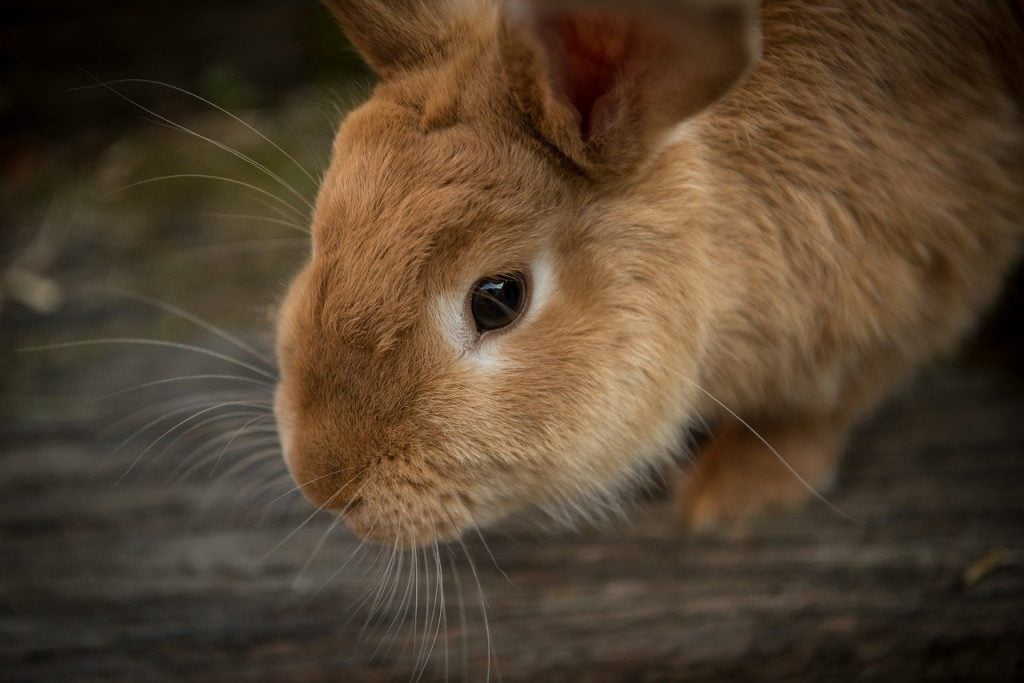Rabbit Health & Welfare
 Pexels/Pixabay.com
Pexels/Pixabay.comBeing able to recognise disease and pain in your pet is a skill that is important to develop. This short handout covers some health disorders that affect the rabbit. It also provides you with some examples of the signs they may exhibit if they are in pain.
Some Common Health Disorders
Flystrike: One of the problems associated with warmer temperatures is flystrike. The greenbottle blowfly and bluebottle can be attracted to the ammonia from urine and the odour from faeces. If the fly lays its eggs on the rabbits coat maggots will hatch and will feed on the skin and tissue. This is a life threatening condition and is prevented by keeping the hutch clean, regularly checking your rabbit and using a product available from your vets called Rearguard which is applied to the rear-end, to repel flies.
Dental disease: Rabbits’ teeth grow continuously and this growth is affected by the abrasiveness of the diet. Over grown teeth cause pain and prevent the rabbit from chewing and digesting food properly.
Studies have shown that rabbits fed primarily a muesli type diet, even if hay is provided, are more likely to have dental disease. Therefore a diet rich in hay, grass and supplemented with complete pellets/nuggets lead to better dental health.
Gut stasis is an emergency situation. This potentially fatal condition occurs when the digestive system slows down or stops altogether. Bacteria and gas builds up which causes pain and bloating. This stops the rabbit from wanting to eat which makes the situation worse. It is common in rabbits with dental disorders or those fed on a low fibre diet but can arise after a stressful event, pain or following a surgical procedure. Veterinary attention must be sought immediately.
Viral haemorrhagic Disease (VHD): This potentially fatal disease causes internal bleeding. Symptoms include difficulty breathing, loss of appetite, blood from the mouth or nose and lack of co-ordination. Unfortunately in most cases, rabbits die without showing any signs of disease. There is no cure but the disease can be prevented through vaccination. Even if your rabbit is kept indoors or doesn’t mix with others, vaccination is still important because it can be spread via flies, birds and rodents.
Myxomatosis is a highly contagious, often fatal disease spread between rabbits. It can also be transmitted through fleas and other biting insects. Consequently all rabbits are at risk. The virus causes swelling and discharges from the eyes, nose and anus. Treatment is not usually successful although vaccinations are available to prevent the disease.
Pain: Because rabbits are a prey species they very often hide pain. It helps to know some of the signs of pain and discomfort as this may alert you when something is wrong.
Signs of Pain in a rabbit include:
- Reduced eating and drinking
- Hunched up appearance
- Reduced movement
- Aggression – reluctance to be handled
- Teeth grinding
- A tightness around the facial muscles
- Changes in ear position – usually laid flat against the head
Newcastle University has developed a chart that depicts the facial expressions shown in a rabbit that is in pain. Click here to download the images.
For more useful information on rabbit health and welfare visit the rabbit welfare website: www.rabbitwelfare.co.uk.